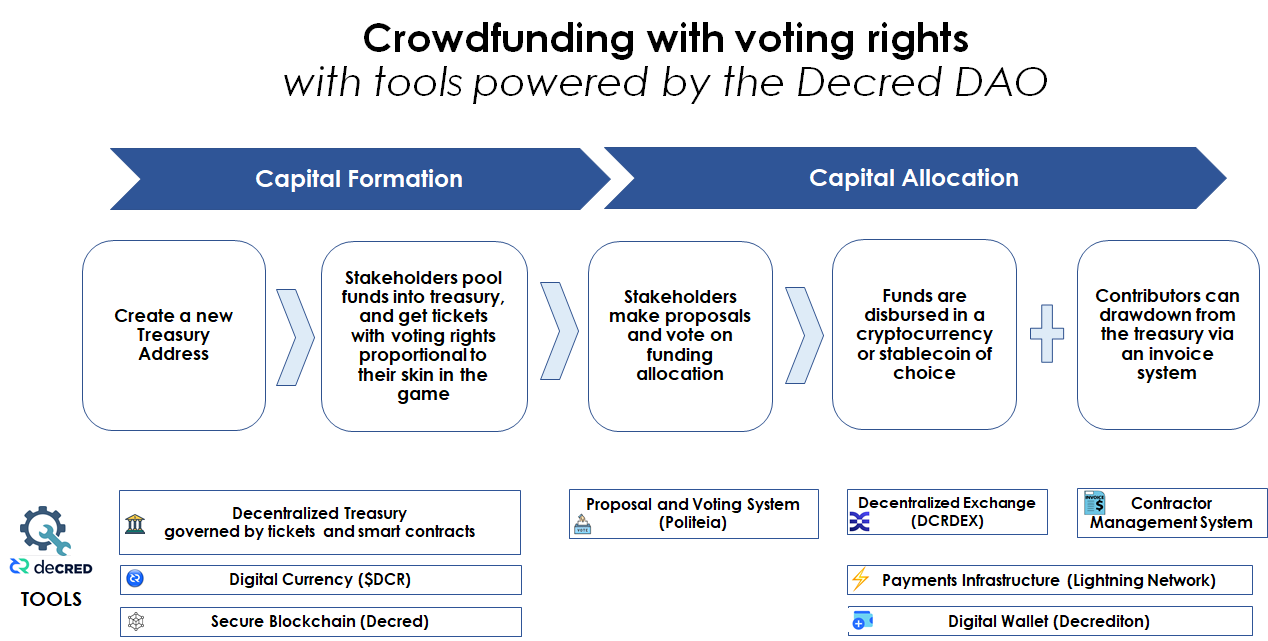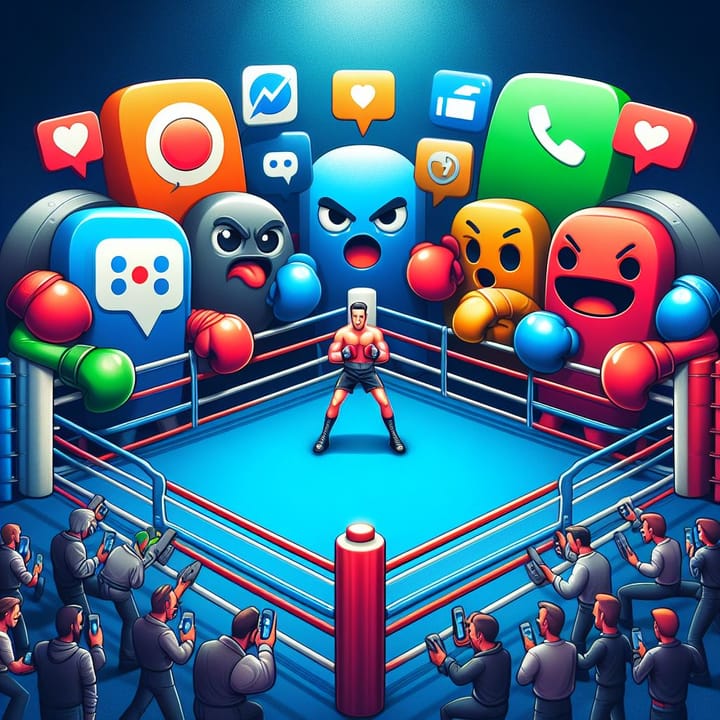Crowdfunding with voting rights — A killer feature of the Decred DAO
Modern day crowdfunding can be traced back to 1997, when a British rock band first used the internet to finance a music tour across North America. This model was popularized in the 2000s with platforms like Kickstarter and Indiegogo, which took crowdfunding mainstream.


Modern day crowdfunding can be traced back to 1997, when a British rock band first used the internet to finance a music tour across North America. This model was popularized in the 2000s with platforms like Kickstarter and Indiegogo, which took crowdfunding mainstream. By the late 2010s, the rise of cryptocurrencies took crowdfunding a step further, by raising capital via online issued currencies.
Today, crowdfunding is one of crypto’s biggest applications:
- Initial Coin Offerings (ICOs) were used to raise nearly $7 billion in token funding between 2017 and 2019.
- 16 of the 20 biggest crowdfunded projects listed on Wikipedia have been crowdfunded via crypto.
The use of $ETH in capital formation has been one of the biggest sources of financial demand for the Ethereum network. But while crowdfunding has gone online, decision making on disbursements has still remained offline, in the hands of trusted third parties.
The next frontier in crowdfunding is unlocking the wisdom of the crowd.

The next frontier in crowdfunding is to go beyond the capital formation stage, by bringing decision making rights online. Voting rights in decentralized organizations requires new digital infrastructure to enable both capital formation and capital allocation.
Much like the Ethereum platform was used to enable ICOs, tools built by the Decred DAO will be used to combine crowdfunding and voting rights.

Some of the technical implementations may vary, but this vision is not far from the raw technology tools already available to the Decred DAO today. Unlike cryptocurrency projects which are singularly looking to build a form of digital money, the Decred DAO combines money with voting rights and a collection of decentralized tools to enable new forms of economic coordination. Consider the tools needed to enable this vision:
- An online Treasury where people can donate into a pool. Control of this address would be governed by the crowd (via a smart contracts based voting system — see point 2).
- A governance system where people who pay into a shared pool get a voting ticket. The number of tickets and voting power is proportional to stakeholders’ skin in the game.
- A proposal system which allows people to submit ideas to be sponsored by the treasury.
- A reserve currency in which the treasury is denominated. This currency should ideally be inflation proof and easily interoperable with other currencies, so that the funds are not easily devalued, and stakeholders have optionality when disbursing funds.
- A contractor management system where approved workers can submit expenses to the treasury. Invoices are approved by stakeholders (or a delegated group).
All of those are tools available within the Decred DAO:
- Decred already has a treasury controlled by smart contracts, and a proposal system (Politeia) where people can submit proposals. With a decentralized architecture, you would be able to spin up new treasuries with their own proposal systems.
- Decred already has an inflation proof currency ($DCR), which would act as the reserve asset to be used for community treasury pools. Using the Decrediton wallet and a built in Decentralized Exchange, the crowdfunded $DCR funds can be converted into a medium of exchange (such as stablecoins $USDC and $USDT) in order to spend them.
- Decred also has a Contractor Management System where approved workers can submit expenses to the treasury.
The applications for combining crowdfunding and voting rights are plentiful, and the most important applications will be instances where people value transparency and community input in treasury management.
Consider this use case: Donations and disaster relief.
We’ve all donated to a charities, and wondered where the money really went. Today, even though sending money is easier than ever, donations are likely held back from their true potential because:
- People don’t trust the middlemen collecting donations (lack of transparency)
- People don’t have a say in how crowdfunded donations will be allocated (lack of voice in treasury management)
Here’s how Decred tools could be used to help in a disaster relief scenario:
- Charity X spins up a donation address to receive $DCR
- People donate to treasury address using $DCR, and get a voting ticket proportionate to their skin in the game.
- People can post proposals on Politeia for allocating the money, and stakeholders can vote on them.
- Money is disbursed via currency $DCR (Lightning Network) or an ERC stablecoin (e.g. USDT / USDC).
- Bonus: On the ground workers can use the Decred Contractor Management System to invoice the treasury by showing proof of work, and invoices can be approved by the treasury stakeholders
One of the best features of cryptocurrencies is that funds can directly be sent to people’s wallets, making it possible to send funds to the intended recipients, and bypassing layers of charity managers altogether.
DAOs are the future of crowdfunding.
Crowdfunded pools with voting rights can function as new types of Digital Organizations. In the 2010s, social media networks enabled us to create digital social connections, and DAOs will extend this connection by empowering economic coordination.
Much like offline corporations require a treasury reserve asset, DAOs will need reserve assets which can function as a store of value, and can also be easily converted into a medium of exchange.
Decred is building digital tools to enable the next era in crowdfunding. Once these lego blocks are put together, there will likely be a rapid uptick in the demand for $DCR.
- In 2017, $ETH mooned because it was used to launch ICOs.
- In 2018, $BNB mooned because it was used to launch IEOs.
- In the future, $DCR will moon because it will be used to enable crowdfunding and DAOs.
Further reading: Decred as a DAO infrastructure provider, by Hugo Chang.
Support: DsoHFqbUK7wAb9o9DYZ26L4RwiiuYjerXU2





Comments ()